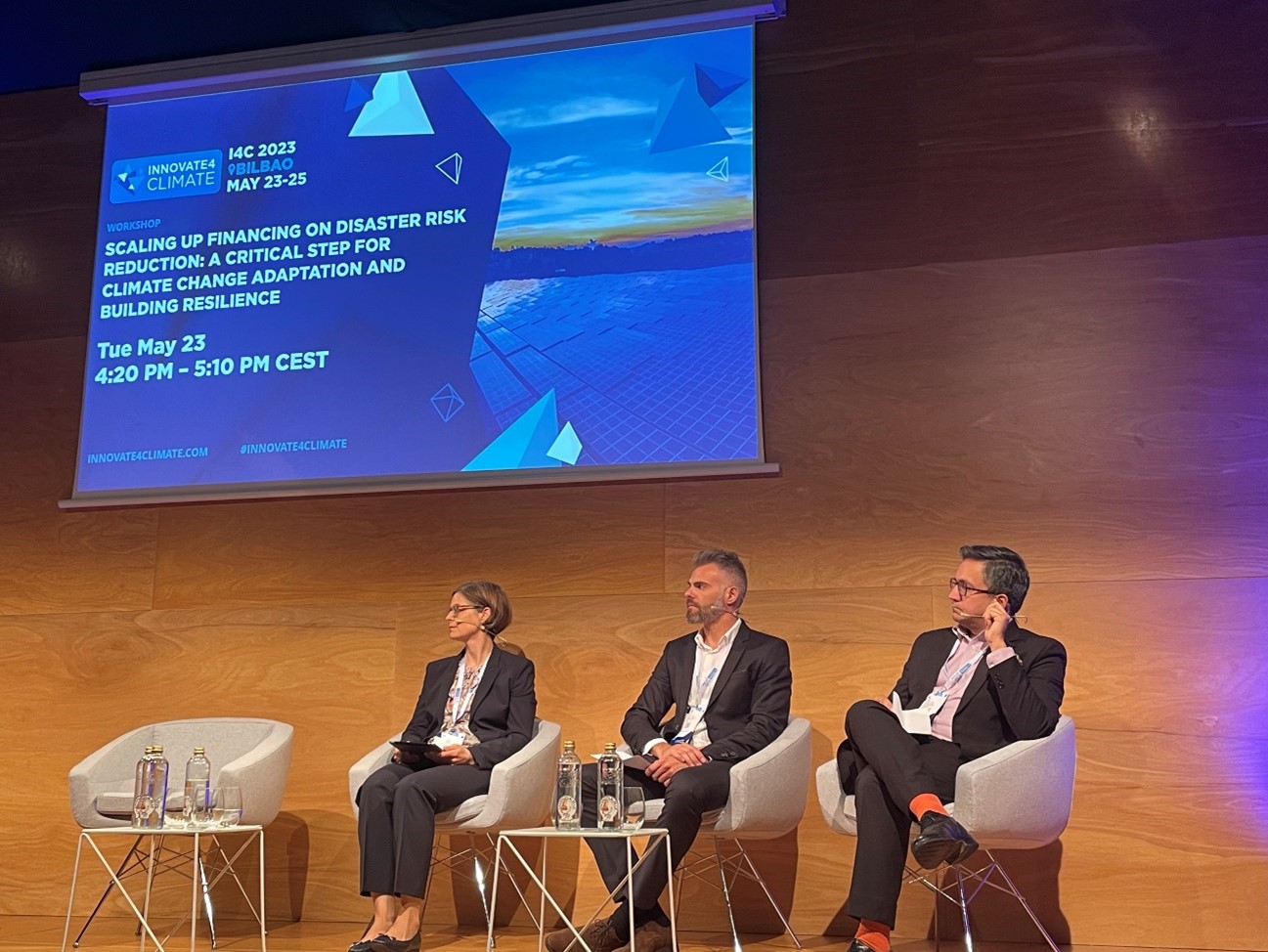IDOM at Innovate4Climate – sharing our experience in disaster risk reduction
On May 23, during the Innovate4Climate congress (May 23-25 in Bilbao), Alberto de Tomás Calero, from IDOM’s Climate Change team, participated alongside experts from the World Bank in the workshop “Scaling up financing on disaster risk reduction: a critical step for climate change adaptation and building resilience”. From different perspectives, the session analyzed how investments in disaster risk reduction enhance support for climate change adaptation in places that require immediate attention.
Our colleague was the voice of the private sector, sharing IDOM’s experience in the development of climate action projects. We tell you about it below!
“Participatory approach increases resilience to the adverse impacts of climate change and promotes the development of social capital”
Participatory approaches for Disaster Risk Reduction (DRR)
Within the framework of DRR, IDOM develops climate action processes at both local and regional levels. In order to achieve effectiveness, inclusiveness, mainstreaming and sustainability of the established adaptation objectives, we consider the implementation of participatory approaches as fundamental. Firstly, participatory approaches bring local knowledge and experience to the analysis of vulnerability and risk to different climate hazards, resulting in more accurate and relevant results. Furthermore, the active participation of stakeholders fosters ownership of the process and their empowerment, resulting in increased responsibility, commitment, trust and cooperation in taking actions to reduce risk and to carry out effective follow-up and monitoring.
These processes also ensure the social inclusion of the different socio-cultural circumstances present in the region under analysis, addressing and reflecting the needs of vulnerable groups such as women, children, the elderly, people with special needs or indigenous peoples. In addition, they promote education and awareness of the risks derived from climate change, which strengthens preparedness and capacity to act in the face of adverse events.
Finally, participatory approaches improve the capacity to mobilize resources and take advantage of external funding opportunities for the development of disaster risk reduction initiatives. At the same time, they facilitate the creation of commitments with external actors, such as government agencies, international organizations and private sector entities, to secure the necessary financial resources.
In short, participatory approaches increase resilience to the adverse effects of climate change by fostering and developing social capital.
NbS as an alternative to DRR
In terms of improving the financing of solutions to address disaster risk reduction, we believe that ecosystem-based adaptation strategies, such as nature-based solutions (NbS), represent an advantageous alternative to conventional infrastructure solutions.
“Its implementation and integration in the project must be done following a cross-cutting and multidimensional approach”
These nature-based solutions offer better cost-effectiveness and are more sustainable and resilient to the adverse impacts of climate change due to their self-regulating adaptive potential. In addition to contributing to disaster risk reduction, they present a number of associated co-benefits, such as biodiversity conservation, raw material supply, water resource management, soil fertility and conservation, carbon sequestration and the creation of recreational spaces.
On the other hand, since NbS generate employment and thus boost local development, they have a higher level of acceptance by the community, ensuring their long-term effectiveness in disaster risk reduction.
However, it is important to bear in mind that the quantification and monetization of the benefits of these nature-based solutions can be difficult and surrounded by certain uncertainties: they require longer time periods to reach optimal performance and may have limited effectiveness in the face of severe events. In addition, they may give rise to territorial conflicts and require the collaboration of all stakeholders and governmental protection mechanisms to ensure their success.
In conclusion, nature-based solutions can be implemented in conjunction with conventional infrastructure solutions and can be interesting for diversifying funding sources by internalizing the associated co-benefits in project costs. However, for their correct implementation and integration, projects must be approached in a cross-cutting and multidimensional manner, and it is also necessary to continue working on minimizing the uncertainties associated with them, through the use of various software and methodologies.
You can watch the recording of the sessions by clicking here


June 21, 2023
PHOTO / IMAGE
From left to right: Lauren Kelly (World Bank Group, Independent Evaluation Group), Janine Kuriger (Swiss Agency for Development and Cooperation), Alberto de Tomás Calero (IDOM Environment) and Karan Mangotra (World Bank).







